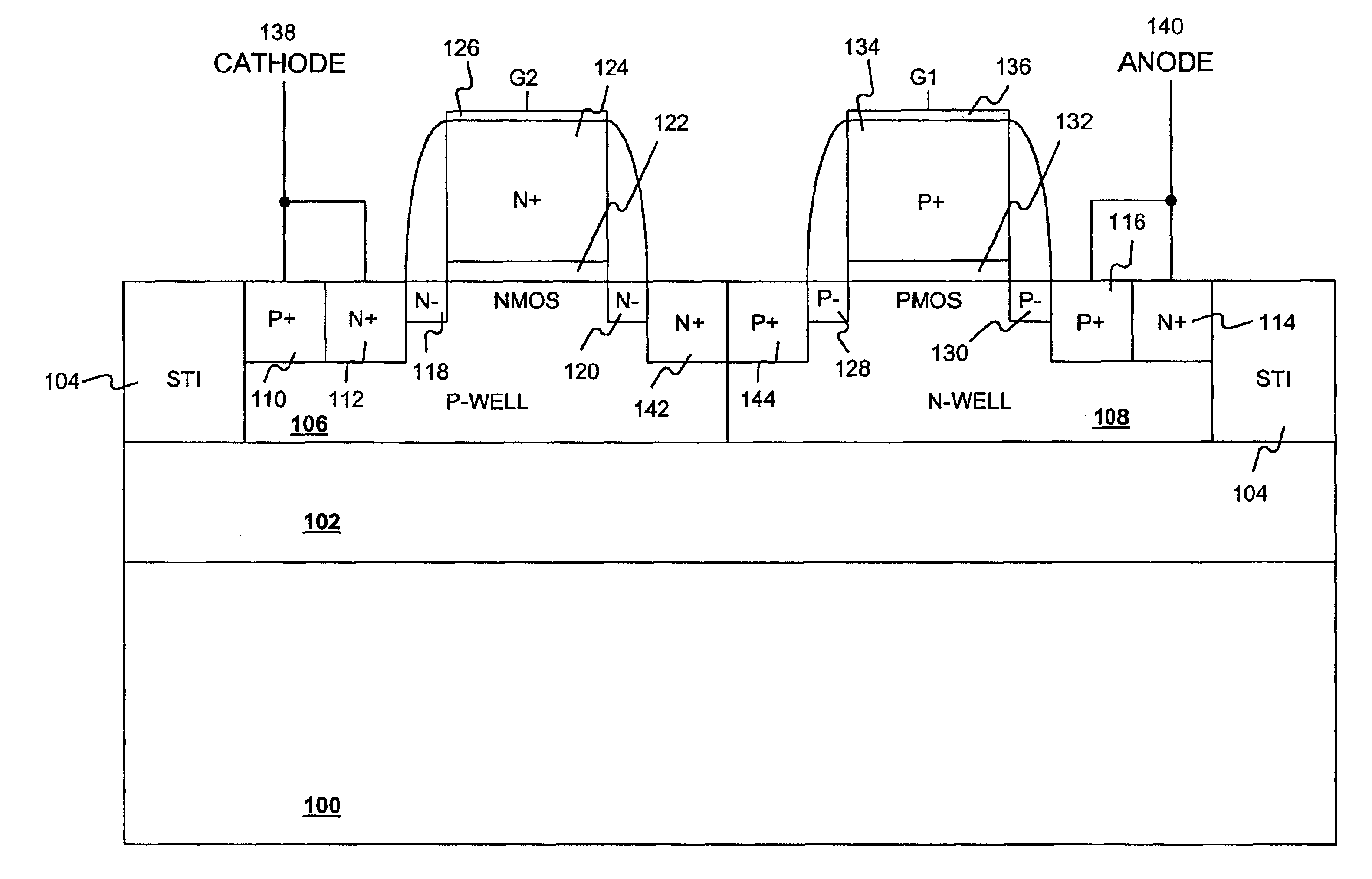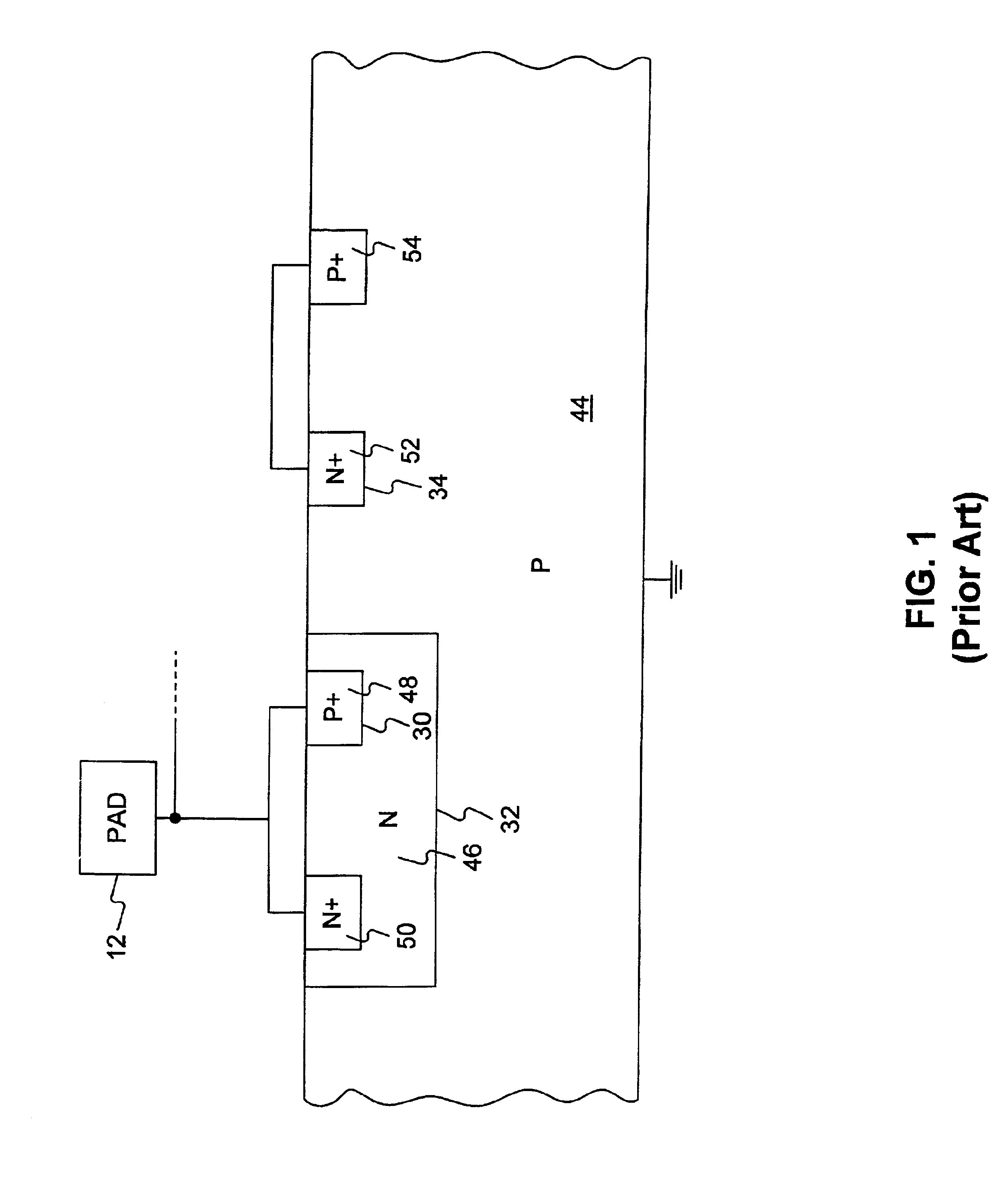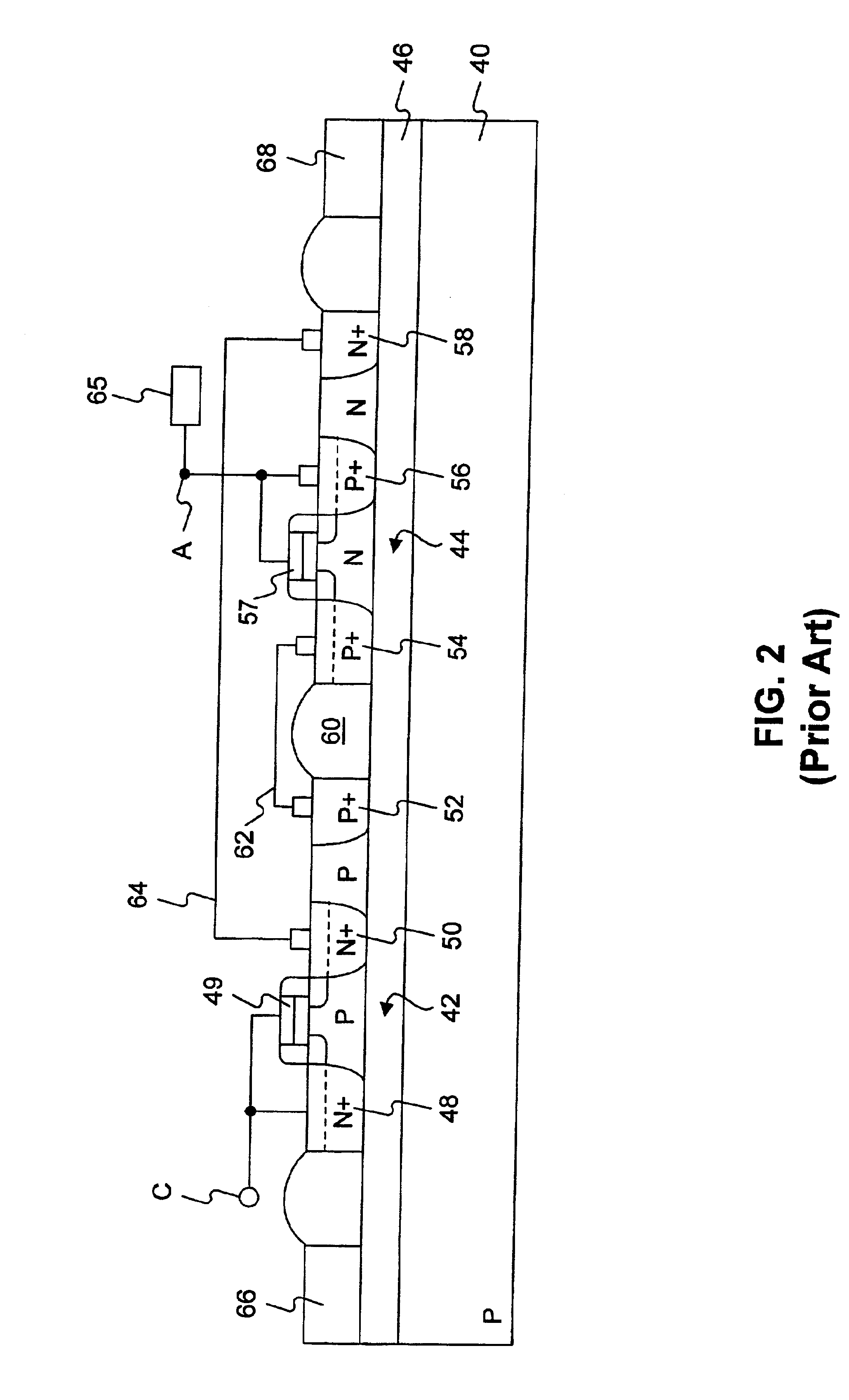SCR devices in silicon-on-insulator CMOS process for on-chip ESD protection
a technology of silicon-on-insulator and cmos, applied in the direction of semiconductor devices, semiconductor/solid-state device details, electrical apparatus, etc., can solve the problems of not being able to protect gate oxides, being susceptible to electrostatic discharge events, and being triggered by substrate noise accidentally
- Summary
- Abstract
- Description
- Claims
- Application Information
AI Technical Summary
Benefits of technology
Problems solved by technology
Method used
Image
Examples
Embodiment Construction
1. Field of the Invention
This invention pertains in general to a semiconductor device and, more particularly, to an electrostatic discharge protection circuit incorporating a silicon controlled rectifier in a silicon-on-insulator semiconductor device.
2. Background of the Invention
Recent advances in integrated circuits have included further development of a silicon-on-insulator (SOI) technology. An SOI technology uses an insulating substrate to improve process characteristics such as speed and latch-up susceptibility. There are two types of SOI processes, fully-depleted and partially-depleted.
In an SOI complementary metal-oxide semiconductor (CMOS) technology, an independent and isolated n-type metal-oxide semiconductor (NMOS) transistor may be provided next to a p-type MOS (PMOS) transistor, and vice versa, because the NMOS and PMOS transistors are electrically isolated from each other and from the underlying silicon substrate. The main advantage of the SOI CMOS technology includes ...
PUM
 Login to View More
Login to View More Abstract
Description
Claims
Application Information
 Login to View More
Login to View More - R&D
- Intellectual Property
- Life Sciences
- Materials
- Tech Scout
- Unparalleled Data Quality
- Higher Quality Content
- 60% Fewer Hallucinations
Browse by: Latest US Patents, China's latest patents, Technical Efficacy Thesaurus, Application Domain, Technology Topic, Popular Technical Reports.
© 2025 PatSnap. All rights reserved.Legal|Privacy policy|Modern Slavery Act Transparency Statement|Sitemap|About US| Contact US: help@patsnap.com



